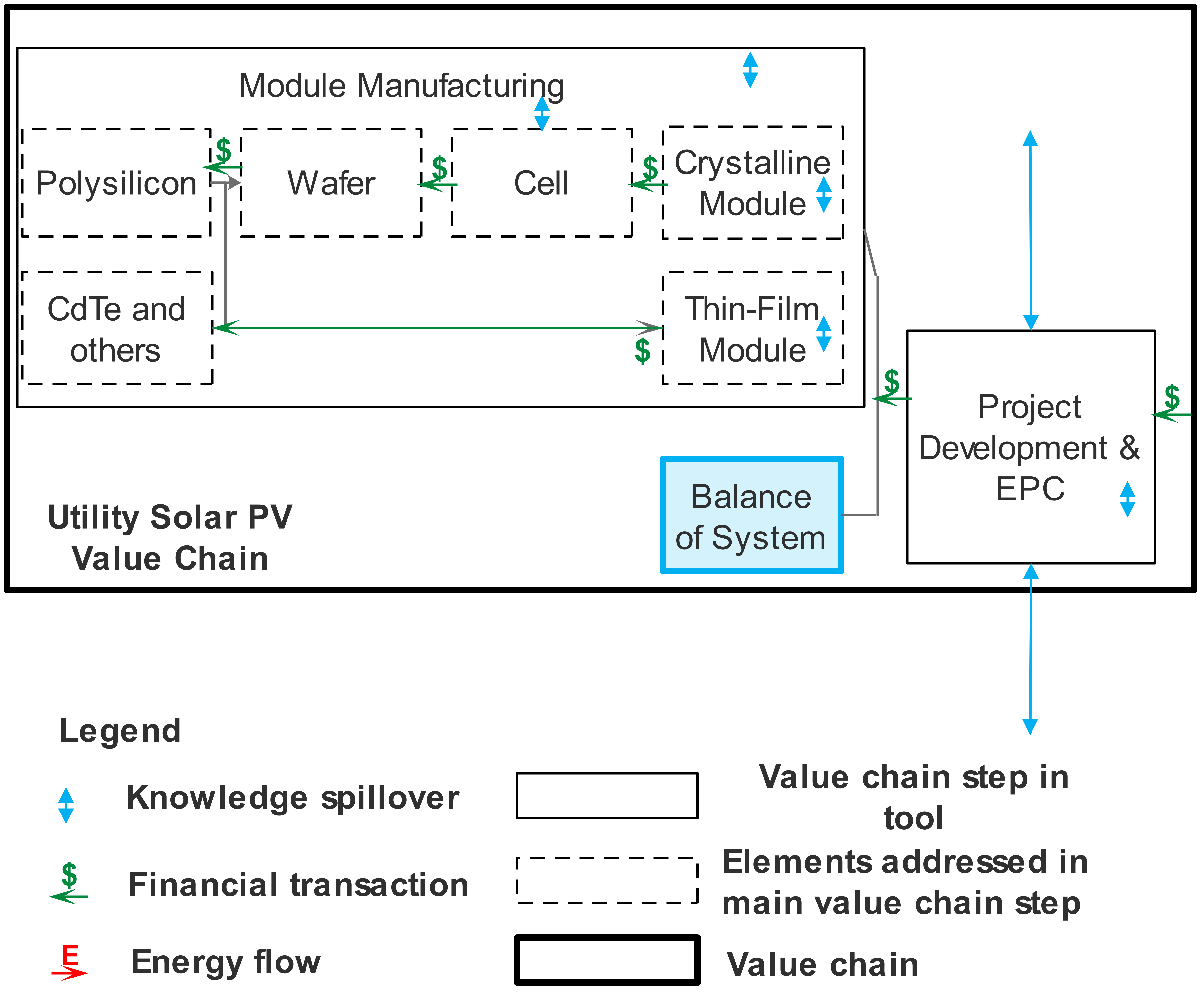
In utility-scale PV construction, “balance of system” (BOS) is a term used to broadly refer to all components, equipment, structures, and services necessary to create an operational generation project, beyond the PV modules themselves. In the BOS step of our utility-scale solar value chain, we follow a narrower definition focusing on inverters and structural BOS (racking, in particular), as these are the top individual cost contributors in a utility-scale PV system, other than PV modules (SEIA 2016, NREL 2017). Inverters are used to convert the DC electricity produced by solar PV modules into AC electricity ready to be fed into the transmission lines. Currently, central inverters dominate the utility-scale PV market because of their higher rated power, greater efficiency, and lower cost. Top ten solar inverter suppliers account for 80% of global shipment in the first half of 2016, and the market dominance has shifted slowly from European countries to China. There are two major types of racking systems: tracking and fixed tilt, and generally tracking systems that move the modules to constantly face the sun produce the largest amount of electricity but are relatively more expensive than the fixed tilt systems. NEXTracker and Array Technologies collectively shipped over 5 GW DC of PV tracker components globally in 2016, accounting for nearly half of the global tracker market in terms of product shipments. Due to the growing share of BOS in the total cost of utility-scale solar systems, it is expected that majority of the future cost reduction potential will likely come from reduced BOS costs via convergence around best practice.
Select an information category (descriptive information, innovative outcomes, strategic conditions, and knowledge conditions) using the tabs to the left or navigate to a different value chain step using the drop-down menu at the top of the page.